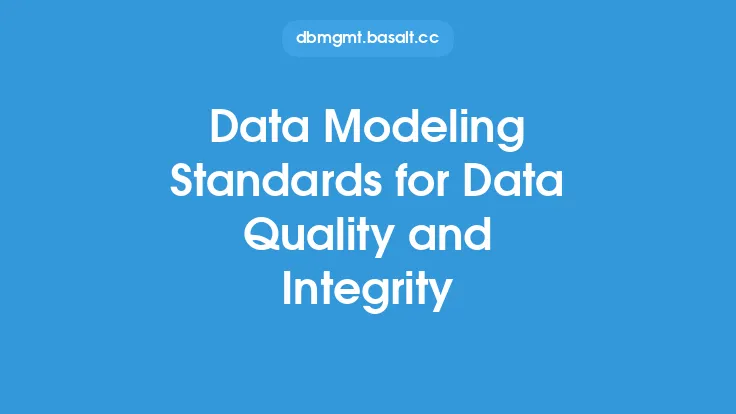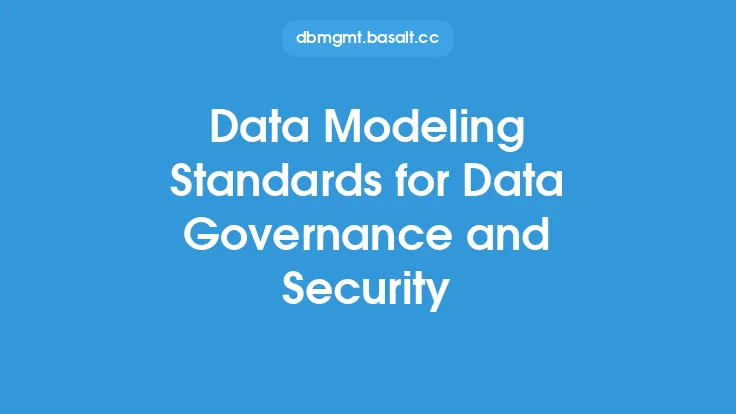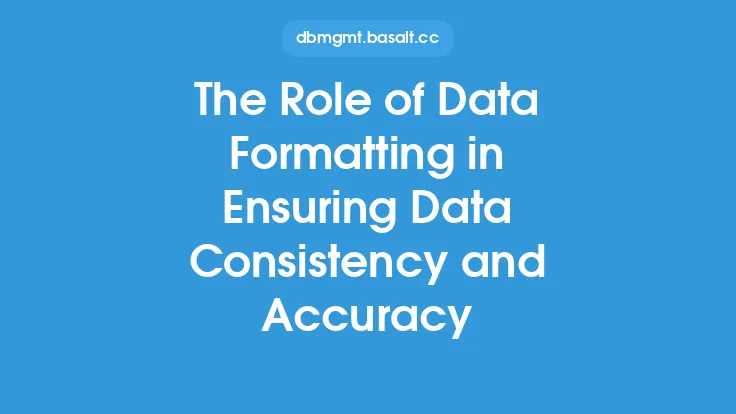Data consistency and accuracy are crucial aspects of data modeling, as they directly impact the reliability and trustworthiness of the data. Inconsistent or inaccurate data can lead to incorrect insights, poor decision-making, and ultimately, business losses. Therefore, it is essential to implement data modeling techniques that ensure data consistency and accuracy. In this article, we will delve into the principles and best practices of data modeling for achieving data consistency and accuracy.
Introduction to Data Consistency
Data consistency refers to the accuracy and reliability of data across the entire database. It ensures that the data is consistent in format, syntax, and semantics, making it easier to understand and analyze. Data consistency is critical in maintaining data integrity, as it prevents data inconsistencies, errors, and contradictions. There are several types of data consistency, including entity consistency, referential consistency, and semantic consistency. Entity consistency ensures that each entity has a unique identifier and that the data associated with each entity is consistent. Referential consistency ensures that relationships between entities are consistent, while semantic consistency ensures that the data is consistent in meaning and interpretation.
Data Validation and Verification
Data validation and verification are essential steps in ensuring data consistency and accuracy. Data validation involves checking the data against a set of predefined rules and constraints to ensure that it is correct and consistent. Data verification, on the other hand, involves checking the data against external sources to ensure that it is accurate and up-to-date. There are several data validation techniques, including format checking, range checking, and checksum verification. Format checking ensures that the data is in the correct format, while range checking ensures that the data is within a specified range. Checksum verification ensures that the data has not been tampered with or altered during transmission or storage.
Data Normalization
Data normalization is a critical aspect of data modeling that ensures data consistency and accuracy. Data normalization involves organizing the data into a structured format, eliminating data redundancy and inconsistencies. There are several normalization techniques, including first normal form (1NF), second normal form (2NF), and third normal form (3NF). 1NF ensures that each table cell contains a single value, while 2NF ensures that each non-key attribute depends on the entire primary key. 3NF ensures that each non-key attribute depends on the primary key and not on another non-key attribute.
Data Governance
Data governance is a set of policies, procedures, and standards that ensure data consistency and accuracy. Data governance involves establishing clear roles and responsibilities for data management, as well as implementing data quality metrics and monitoring. It also involves establishing data standards and policies for data validation, verification, and normalization. Effective data governance ensures that data is accurate, complete, and consistent, and that it is properly documented and maintained.
Data Quality Metrics
Data quality metrics are essential in measuring data consistency and accuracy. There are several data quality metrics, including accuracy, completeness, consistency, and timeliness. Accuracy metrics measure the degree to which the data is correct and reliable, while completeness metrics measure the degree to which the data is comprehensive and up-to-date. Consistency metrics measure the degree to which the data is consistent in format, syntax, and semantics, while timeliness metrics measure the degree to which the data is current and relevant.
Data Modeling Tools and Techniques
There are several data modeling tools and techniques that can help ensure data consistency and accuracy. Entity-relationship modeling (ERM) is a popular data modeling technique that involves creating a visual representation of the data entities and their relationships. ERM helps to identify data inconsistencies and errors, and ensures that the data is properly normalized and structured. Data modeling tools, such as data modeling software and data governance platforms, can also help to ensure data consistency and accuracy. These tools provide features such as data validation, data verification, and data normalization, as well as data quality metrics and monitoring.
Best Practices for Data Consistency and Accuracy
There are several best practices for ensuring data consistency and accuracy. First, it is essential to establish clear data governance policies and procedures. This includes establishing clear roles and responsibilities for data management, as well as implementing data quality metrics and monitoring. Second, it is essential to use data modeling tools and techniques, such as ERM and data normalization. Third, it is essential to implement data validation and verification techniques, such as format checking and checksum verification. Finally, it is essential to regularly monitor and maintain the data to ensure that it is accurate, complete, and consistent.
Conclusion
In conclusion, data consistency and accuracy are critical aspects of data modeling that directly impact the reliability and trustworthiness of the data. By implementing data modeling techniques such as data validation, data verification, data normalization, and data governance, organizations can ensure that their data is accurate, complete, and consistent. Additionally, by using data modeling tools and techniques, such as ERM and data modeling software, organizations can identify data inconsistencies and errors, and ensure that their data is properly structured and maintained. By following best practices for data consistency and accuracy, organizations can ensure that their data is reliable, trustworthy, and actionable, and that it supports informed decision-making and business success.





